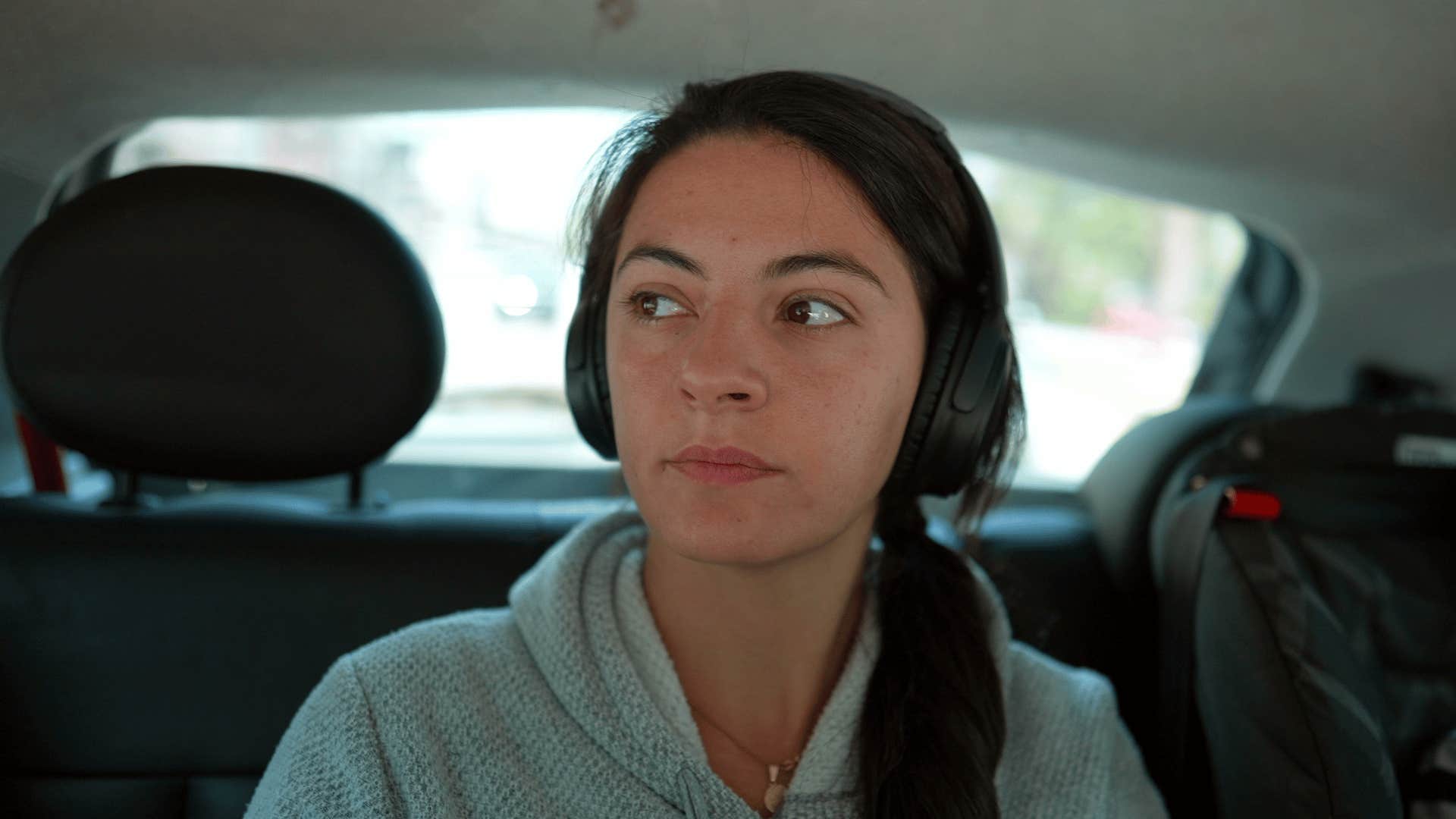8 Things That Horrify People With ADHD But Everyone Else Has No Problem With, According To An ADHD Mom
When everyday tasks turn into extraordinary challenges.
 Ground Picture | Shutterstock
Ground Picture | Shutterstock For individuals with ADHD, everyday tasks and situations that many people find mundane or easy to navigate can often be sources of immense stress and anxiety. According to Cherry, a mom who has ADHD, there are many different things that horrify people with her condition but seem normal to others. These challenges may seem trivial to those without ADHD, but for those living with the condition, they can feel like overwhelming obstacles.
From struggling to get out of their cars to managing their own personal hygiene, the smallest details can quickly spiral into major sources of frustration. This phenomenon highlights how ADHD doesn’t just affect attention but can significantly shape how individuals experience and interact with the world around them, often in ways that others may not fully understand.
Here are the eight things that horrify people with ADHD but everyone else has no problem with:
1. Transitioning from one task to another
 Andrii Iemelianenko | Shutterstock
Andrii Iemelianenko | Shutterstock
ADHD often makes it hard for individuals to switch their attention from one task or environment to another. These types of "pivot points" can result in feeling distracted or disoriented when it's time to move from one place to another.
“Such switching is particularly difficult for adults with ADHD, in no small measure because it involves leaving a state where one is already engaged and productive, such as in the case of 'work,' or what is enjoyable,” said Russell Ramsay, Ph.D., ABPP.
The sudden change in environment can trigger feelings of frustration, anxiety, or overwhelm, especially if there is not enough time to mentally prepare. Using alarms, timers, or visual reminders like sticky notes or whiteboards to signal that it's time to transition can help them. These cues can help prompt action and reduce the mental load of remembering when to switch.
2. Washing their hair
 Mariia Boiko | Shutterstock
Mariia Boiko | Shutterstock
For some people with ADHD, the texture of their hair or the sensory experience involved in washing their hair can play a role in their avoidance of the task.
Sensory sensitivities are relatively common among individuals with ADHD, and the texture of the hair, shampoo, or the feeling of water running through the hair can be overwhelming or uncomfortable for some people.
According to a study, 5.3% of the kindergarten children meet screening criteria for sensory processing disorders based on parental reports. Highlighting the significant number of children who may be struggling with sensory sensitivities, which can be particularly relevant for children with ADHD or other behavioral concerns.
3. Background distractions
 Bricolage | Shutterstock
Bricolage | Shutterstock
While it may seem rude for someone to constantly have their headphones on, especially when you’re talking to them, for people with ADHD, wearing headphones can signal to others that they are in a focused mode and might not want to be interrupted.
People with ADHD use headphones to help manage the thoughts that distract them internally. For instance, listening to a podcast or calming sounds can help quiet the racing thoughts that can pull them away from tasks. Those noise-canceling headphones can also help with auditory distractions over everyday life that most people have no problem tuning out.
Researchers found that integrating music into treatment strategies, whether through therapy, academic support, or video games, could be a powerful tool in managing ADHD symptoms. Music or sounds can help maintain focus by providing a rhythm or background that makes a task feel less tedious.
4. Estimating time
 fizkes | Shutterstock
fizkes | Shutterstock
People with ADHD deal with time blindness or an impaired ability to perceive and estimate the passage of time accurately. This means that people with ADHD often struggle to gauge how long a task will take or how much time has passed. This can lead to losing track of time, especially during activities that are engaging or that require sustained attention.
Without structured routines or reminders, it’s easy for people with ADHD to lose track of time. Without external cues like clocks or timers, they may have trouble organizing their day effectively, leading them to miss important deadlines.
They might also forget to use the tools that help them effectively manage time, which further exacerbates the issue.
5. Organizing
 Roman Samborskyi | Shutterstock
Roman Samborskyi | Shutterstock
ADHD often involves challenges with executive functioning, which includes skills like planning, organizing, and prioritizing tasks. This means that someone with ADHD might start an activity but struggle to finish it in an organized or tidy way, leading to an even bigger mess. Later, the realization of the mess may trigger feelings of frustration or anxiety, causing them to overthink how to handle it.
If you find yourself or someone you know overthinking a mess, breaking the task down into smaller, more manageable steps and focusing on progress rather than perfection can help alleviate some of the overwhelm.
Remember to take the mess on little by little, delegating tasks every couple of hours or so, allowing breaks in between.
6. Eating
 Roman Samborskyi | Shutterstock
Roman Samborskyi | Shutterstock
It may not make sense to people how someone can forget to eat for the day, but for people with ADHD, it happens more frequently than you think. This often happens because they are distracted by doing something else.
One of the hallmark traits of ADHD is the ability to hyper-focus on tasks or activities that capture attention. They get too in the zone of the task that they are doing that they often forget about bodily functions like eating and using the restroom.
Research shows that 75% of ADHD cases persist into adulthood, and 12% are tied to disordered eating habits such as binge eating, disinhibited eating, and restrictive eating. This makes a consistent eating plan especially important for people with ADHD due to the challenges they face in managing attention, impulse control, and awareness of internal signals like hunger and satiety.
7. Stepping onto something wet in socks
 Prostock-studio | Shutterstock
Prostock-studio | Shutterstock
Sensory isn’t just what you feel in your hands; for people who have ADHD, simply stepping on something accidentally can make a good day turn into a bad one.
Because of the emotional regulation challenges associated with ADHD, something small like wet socks can feel disproportionately annoying or uncomfortable. The reaction might be stronger than expected, especially if the person has a lot of other stressors or distractions happening at the time.
Ironically, stepping on something wet could also symbolize a quick, unplanned change in their environment. People with ADHD can sometimes struggle with transitions, so the abrupt shift from what they were doing to having to deal with wet socks can add extra mental load.
According to Catherine J. Mutti-Driscoll, Ph.D., cognitive flexibility can help people with ADHD adjust to the unexpected. You can do this by encouraging yourself to overcome what is happening at the moment and reminding yourself that you have gone through worse.
8. Losing things
 Dikushin Dmitry | Shutterstock
Dikushin Dmitry | Shutterstock
People with ADHD often struggle with memory and organization, so misplacing keys, phones, or important documents is a regular occurrence.
Working memory refers to the ability to hold and manipulate information in the short term. For someone with ADHD, this can be harder, which leads to difficulty remembering where they placed something or even forgetting they had it in the first place.
The constant misplacement of items can trigger anxiety and a sense of panic. The act of searching for misplaced items can become time-consuming and frustrating, especially when it happens frequently. This can cause stress or a feeling of being behind on other tasks.
Sharon Saline, Psy.D. recommended using a designated space she referred to as a "launchpad," such as a shelf or table to hold the things you need when you leave your house. By doing this, you save yourself time and energy when looking for things.
Sylvia Ojeda is an author with a decade of experience writing novels and screenplays. She covers self-help, relationships, culture, and human interest topics.
